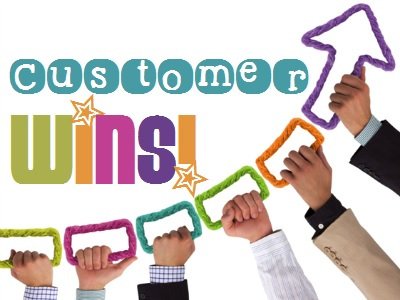In the light of the fact that customers are becoming more demanding and comparing different companies against each other when they base their decisions on where to purchase based on their experience. … A lot of companies want to make sure they do well on customer satisfaction by increasing the observed performance.
Some of the instant boosters for ensuring your organization’s focus on CX gets moving are:
- Figure Out What the Customer Really Want ?
“Figure out what the customer really wants, if you can solve the problem they will pay; the value is often not in the discount you can offer but rather in the solution you can provide.” which is fairly under the timelines what the customer would have thought it should take.
- Focus on Company Culture
The best of the companies put a genuine focus on developing and to implement culture. They implement training programs around their cultural values to ensure everyone shares the same values and that they are consistently demonstrated when dealing with customers.”
- Stay Current on Customer Reviews
In a world that is heavily dependent on the internet, consumers are quick to get online and share how they feel about a product or service. Please ensure to log onto the internet and observe what people are saying about your business or the product at above all the services. Find out what people enjoy, as well as what they’d like to see improved. The reviews you stumble across might surprise you and introduce you to areas of improvement that you had not previously considered.
“The key here is to contact your customers before they need to pick up the phone and contact you! To be effective, these contacts should be timely, personalized and relevant to the consumer.
The best proactive strategies include getting in regular contact throughout the consumer lifecycle. Examples include: payment reminders, fraud monitoring, and personalized loyalty and reward schemes. This strategy can reduce inbound calls and improve agent efficiency. This proves that offering great customer service isn’t just good for the consumer, it’s good for the business as well.”
- Get a Social Media Plan in action
“Customers in this era are increasingly demanding speedy responses—sometimes as quickly as in real time—to their complaints and queries on social media. Any company that isn’t paying attention can wreak havoc with its reputation.” Being active on social media would play a pivotal role.
- Benchmark Customer Satisfaction
“Benchmarking is the process of comparing your own organization or operations against other organizations in your industry or in the broader marketplace. You might compare your most successful competitor’s customer processes and satisfaction with your own. Or, you might look at a firm outside of your industry known for remarkable customer service practices. Establishing a benchmarking initiative is an important component of measuring and improving your customer service and satisfaction and coming out as a winner.
- Set Clear Expectations and Exceed Them
“Nothing is more frustrating for a consumer than wandering around in a digital world unsure of what to expect from a business, or when. One should Let customers know up front what your standards and practices are. How long will they wait for a response or a callback? Will that response truly be on target and accurate? Removing the customers’ uncertainty about such often repeated issues in customer service lets them know that a company is committed to their success and satisfaction, especially when the business builds in enough leeway that it can routinely exceed expectations.”
- Ask for More Feedback
It is true that sometimes, it can be difficult to find ways to improve customer satisfaction. But there are always more customers who have valuable insights that they haven’t given to you. It’s up to you to go fishing, not for compliments, but for criticisms. In your survey, after asking customers how satisfied they are, you should provide a form where they can type out a response. You have a few different options here. It’s most common to ask customers to explain why they gave you the score that they did. You can pick more customers’ brains by phrasing your question/statement more clearly. For example, you could ask: “What could we have done differently to improve your experience?” By being upfront about what you’re asking, customers will provide you with more insightful responses.”
- Omnichannel Engagement Across All Touchpoints
A consistent experience across all touch points, from mobile to social media to video, is paramount to a good customer experience along the entire customer journey. It is not productive to focus on any one single area – the complete journey is the bigger picture that you have to understand. The Harvard Business Review may have said it best when they stated, simply, “More Touchpoints, More Complexity”, but they also note companies that are able to successfully manage the entire journey enjoy greater customer satisfaction, less churn, increased revenue, and higher levels of employee satisfaction [5]. There is also an enormous potential to gain valuable insights specific to each channel every time there is a customer interaction.
- Transparency
Social media ushered in an era of authenticity and transparency, and those rules apply more than ever. Customers expect fast service and an authentic explanation communicated in a genuine, personable tone. Companies that ignore this now widely-accepted principle risk damage to their reputation or negative word of mouth spreading like wildfire, which can mean losing out on a lot of business.
- The Customer is Always Right (Even if They Aren’t Really Right)
The old adage has some merit when it comes to the Customer Experience. That doesn’t mean customers should be humored even when they are on the wrong side. In fact, avoid that at all since consumers have a knack for sniffing out a lack of authenticity. What it does mean, however, is that customers have to be heard when they go out of their way to project their voices across multiple channels, platforms and devices. So utilize modern technology to deliver an experience that will delight your customers and inspire them to talk about it if you want to grow and retain your customer base.
- Mapping Current Performance
Once a company has identified its key customer journeys, it must examine each one in detail in order to understand the causes of current performance. This deep dive involves additional research, including customer and employee focus groups and call monitoring. Combined with the initial analysis, it allows the company to map the most significant permutations of each journey as the customer experiences and would describe it, revealing the sequence of steps she is likely to take from start to finish. The mapping exercise also exposes departures from the ideal customer experience and their causes, and often reveals policy choices or company processes that unintentionally generate adverse results. For example, many companies charge for phone-based technical support, thinking that imposing a fee will steer customers to self-service options. But the consequence may be numerous callbacks or inadequate do-it-yourself fixes, both of which degrade the customer experience.
- Redesigning the Experience and Engaging the Front Line of your business
Once a company has identified its priority journeys and gained an understanding of the problems within them, leaders must avoid the temptation to helicopter in and dictate remedies; indeed, they should refrain from any solutions (including ones from outside experts) that don’t give employees a big hand in shaping the outcome. Even if a fix appears obvious from the outside, the root causes of poor customer experience always stem from the inside, often from cross-functional disconnects. Only by getting cross-functional teams together to see problems for themselves and design solutions as a group can companies hope to make fixes that stick.
To Know More Please Click Here.






